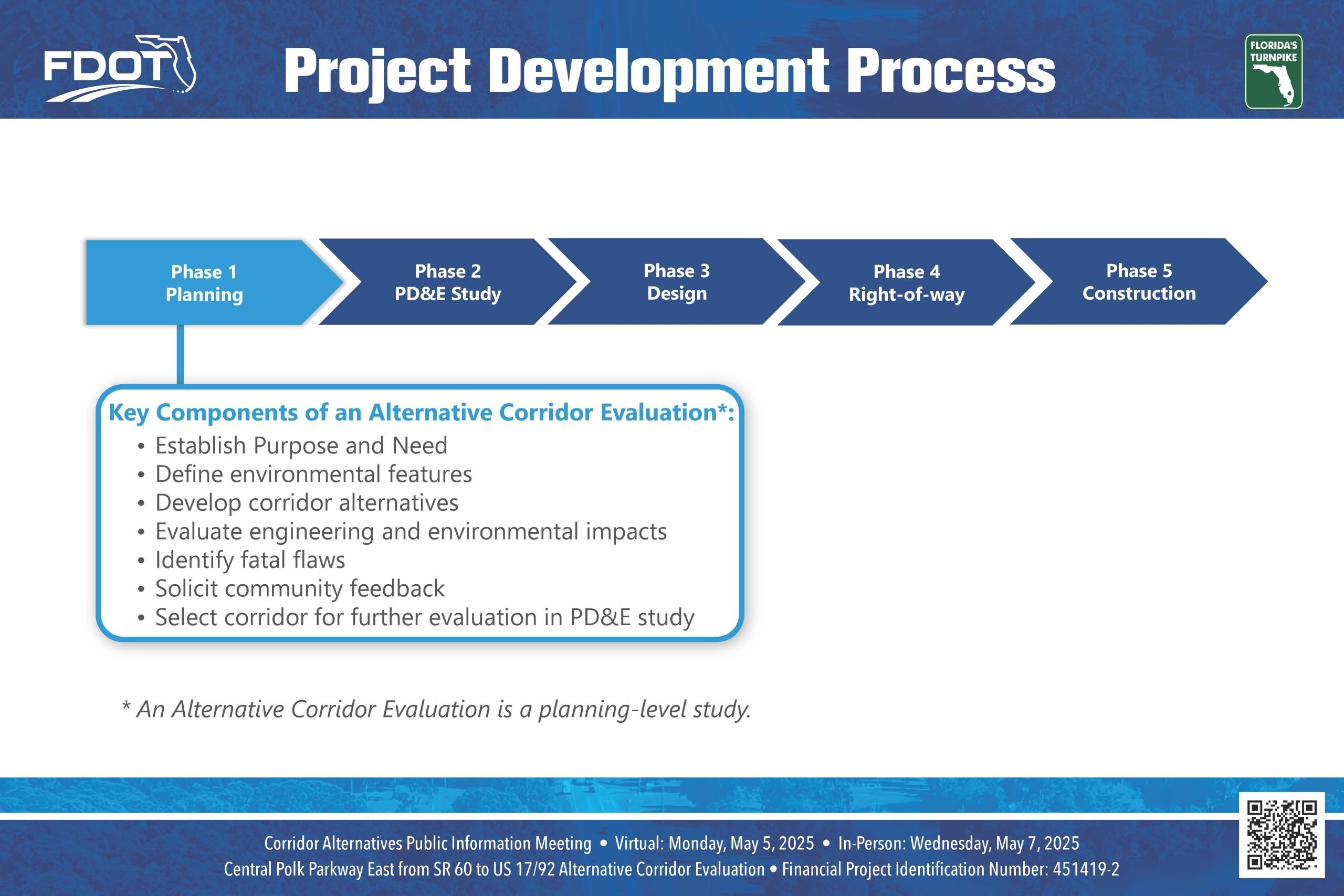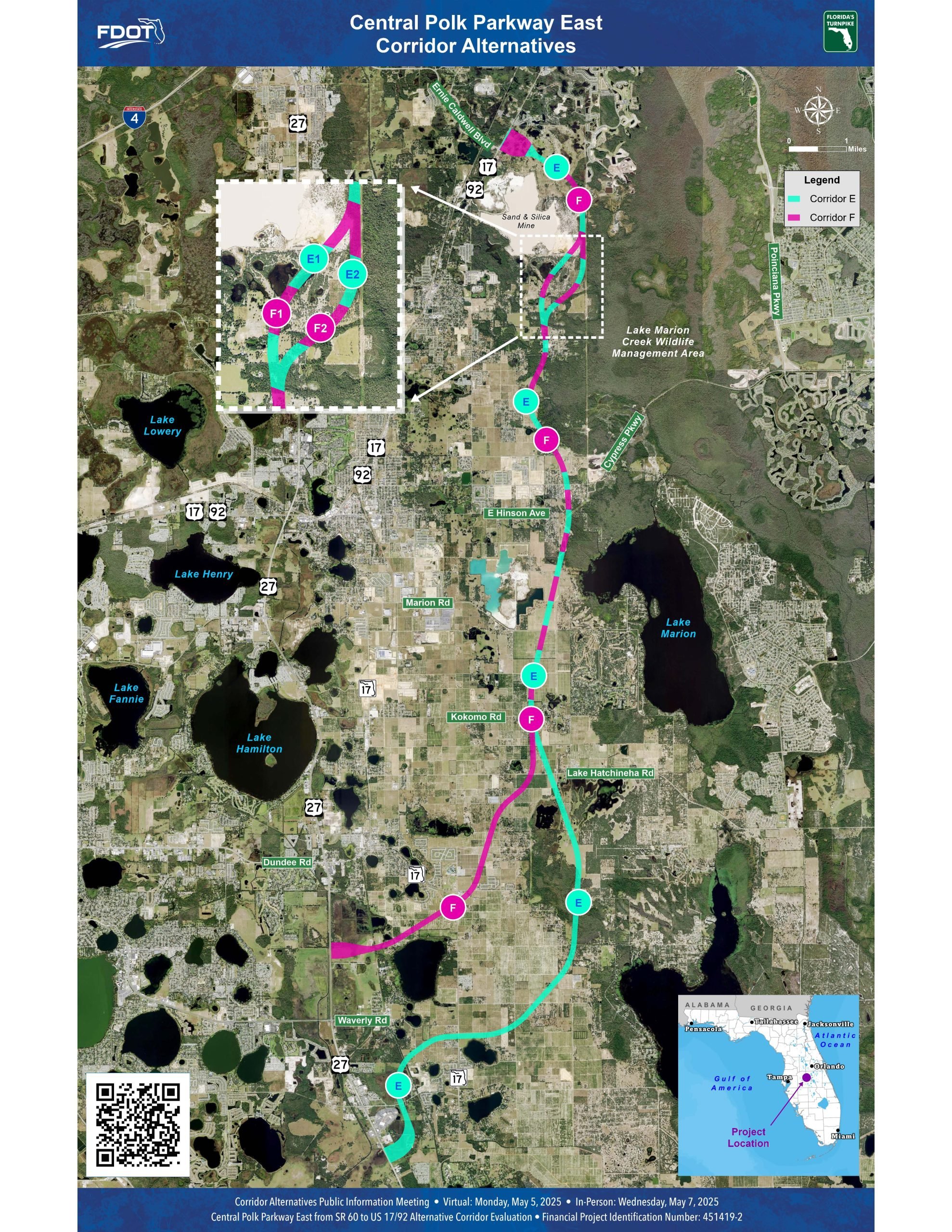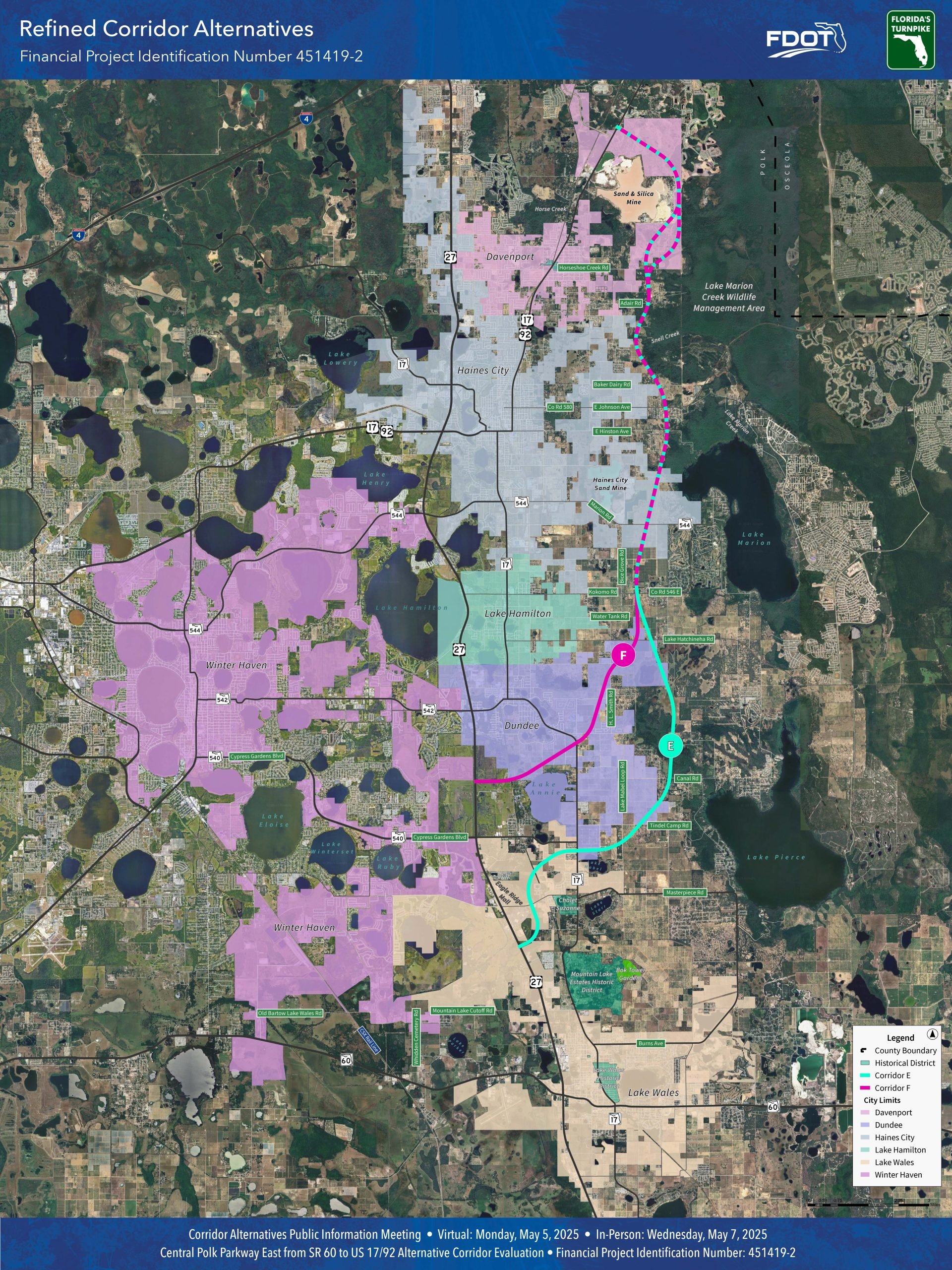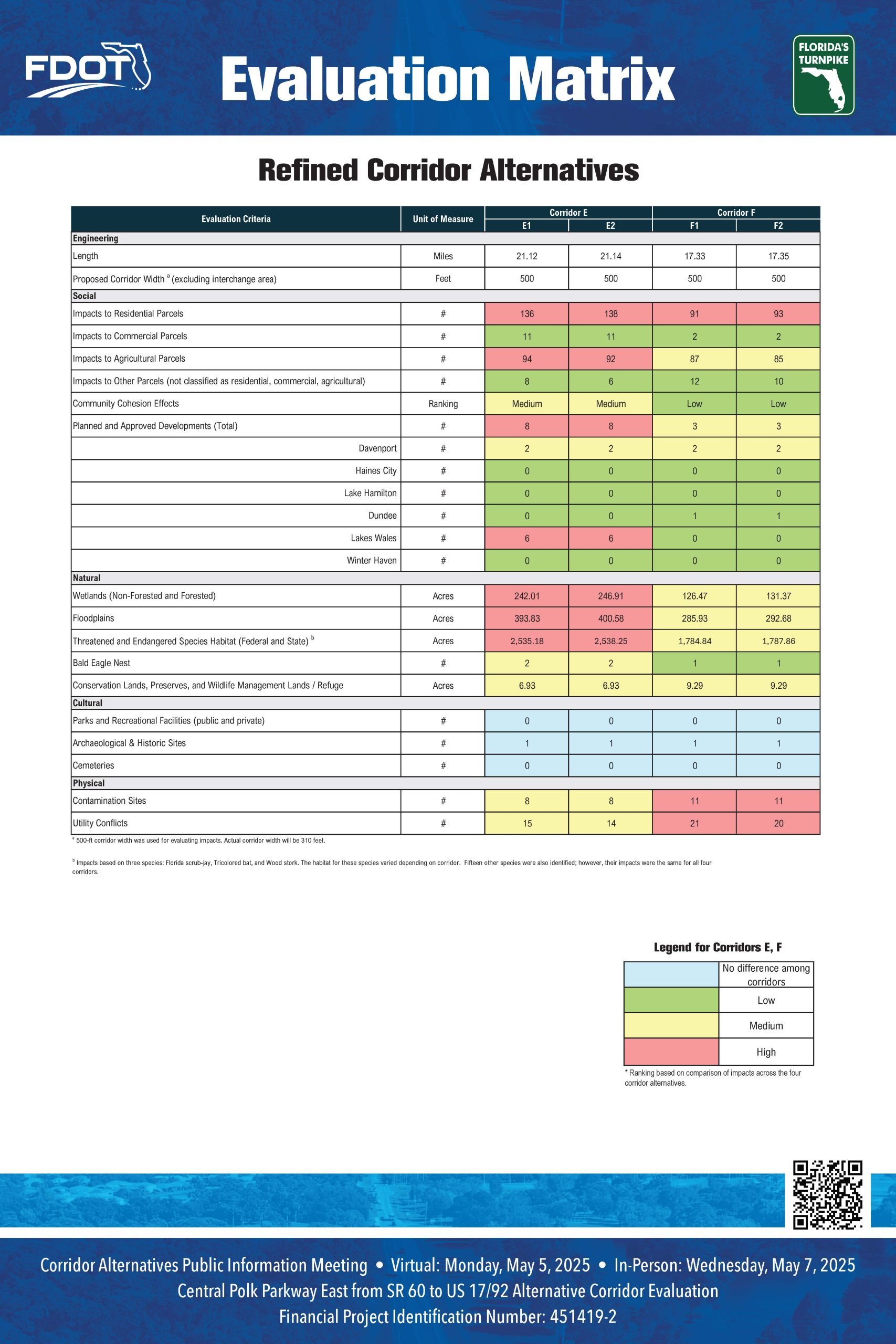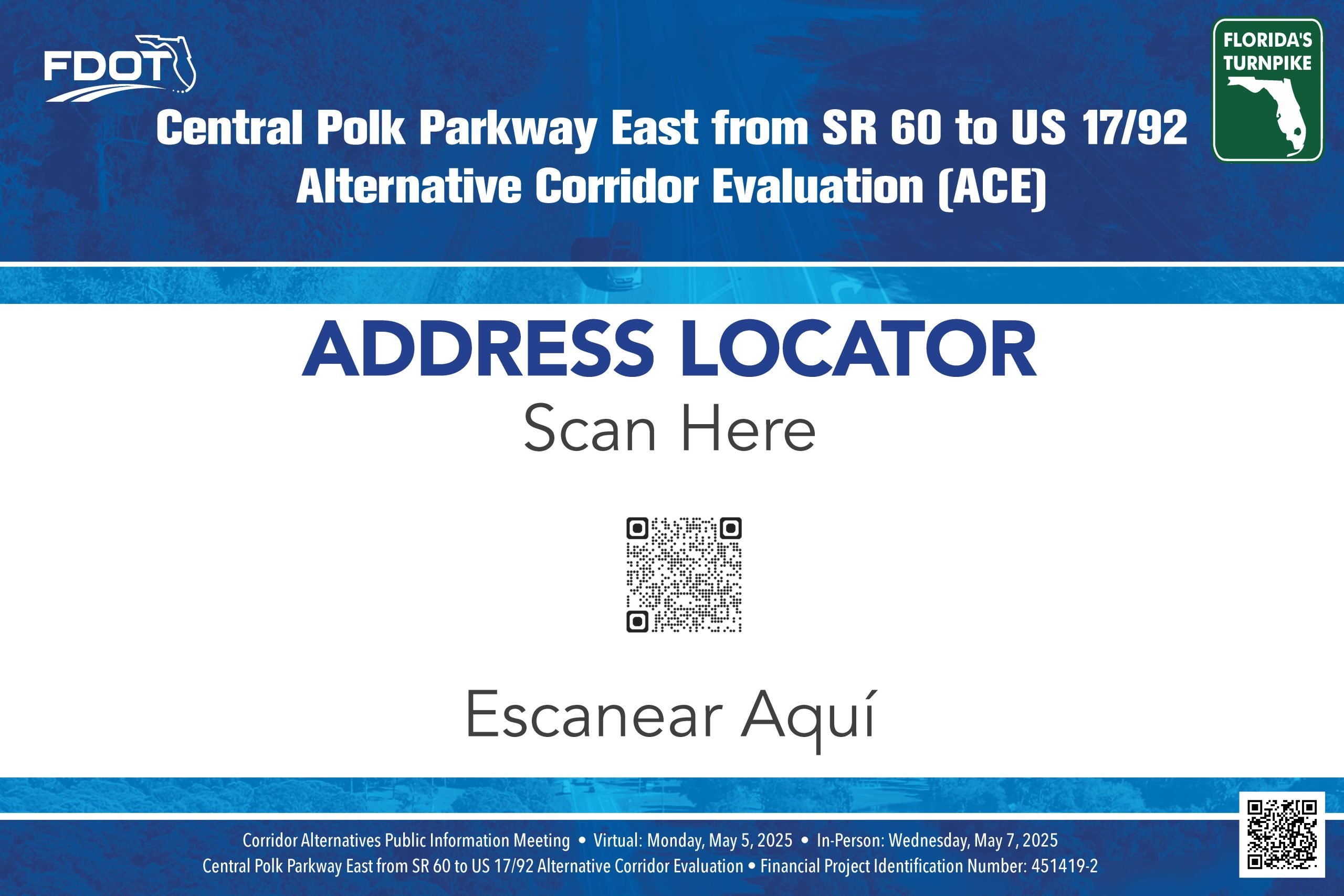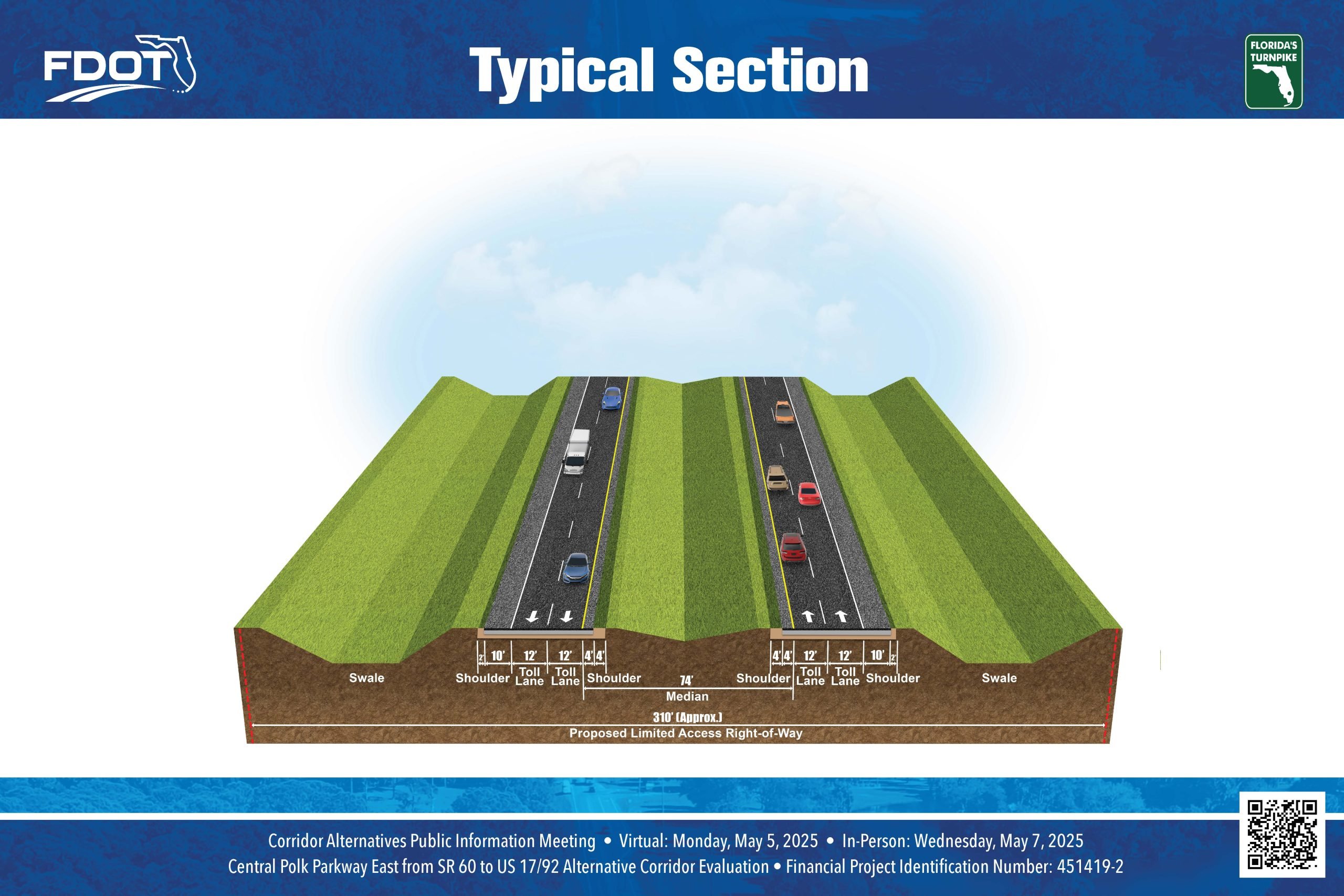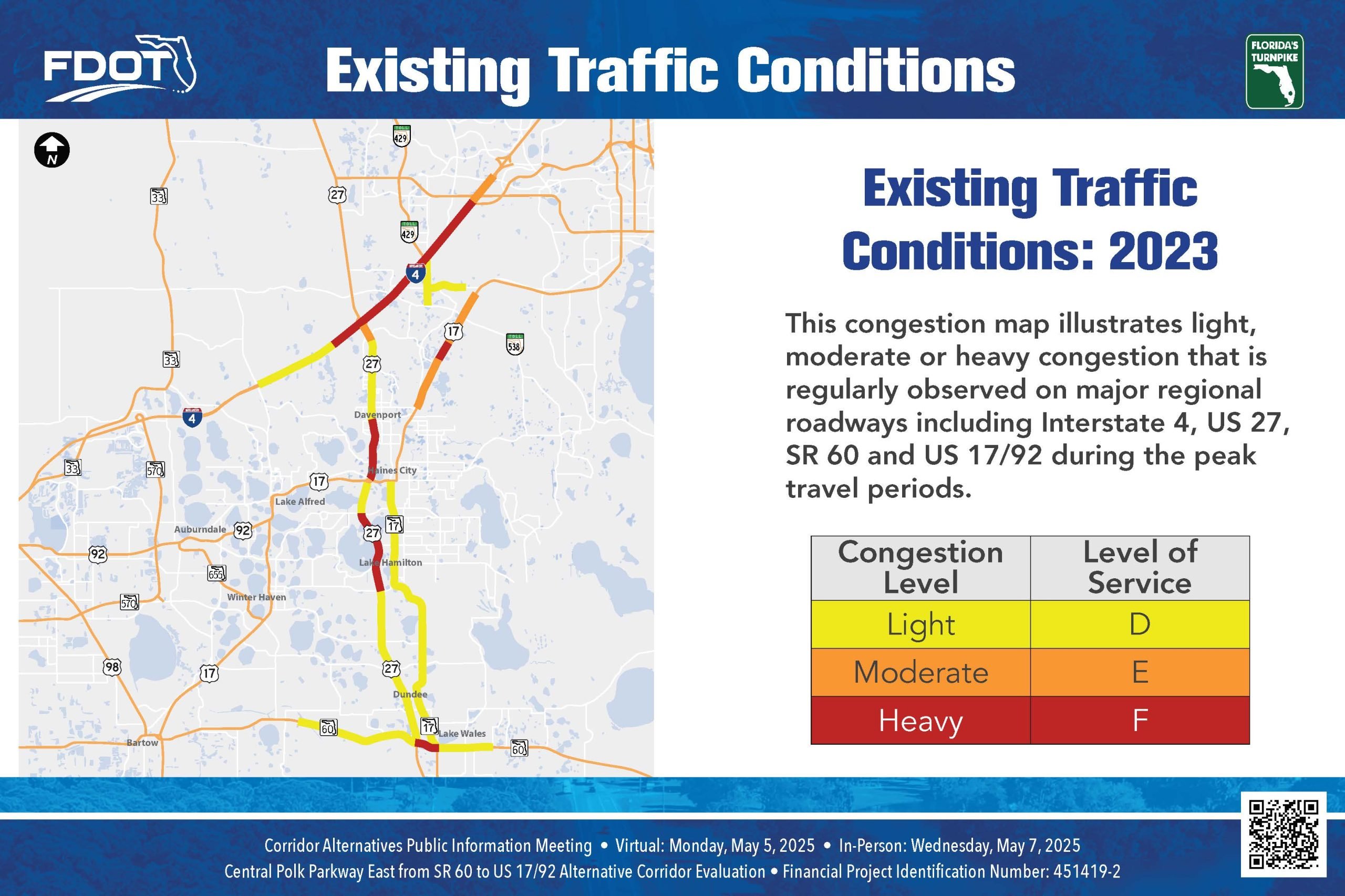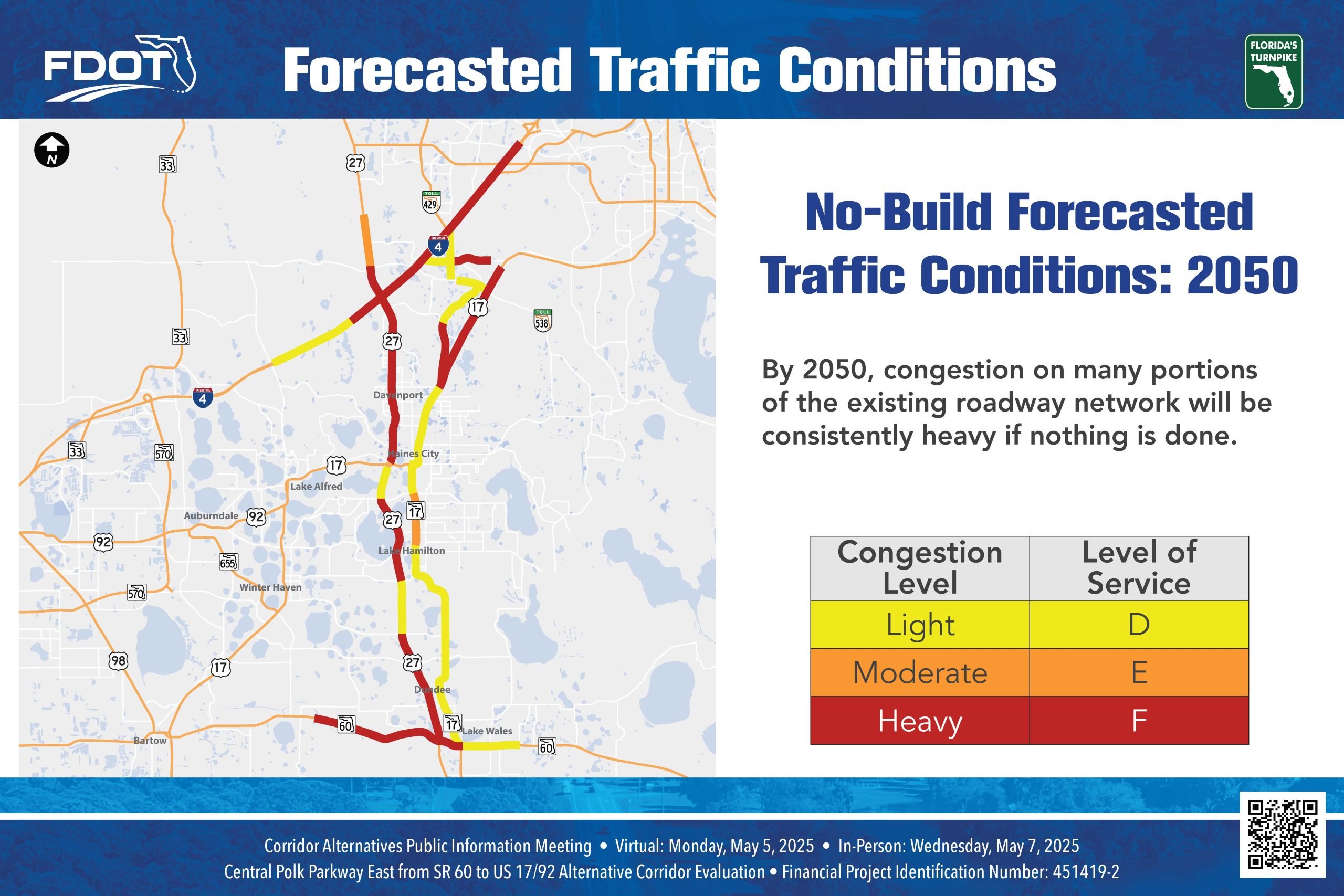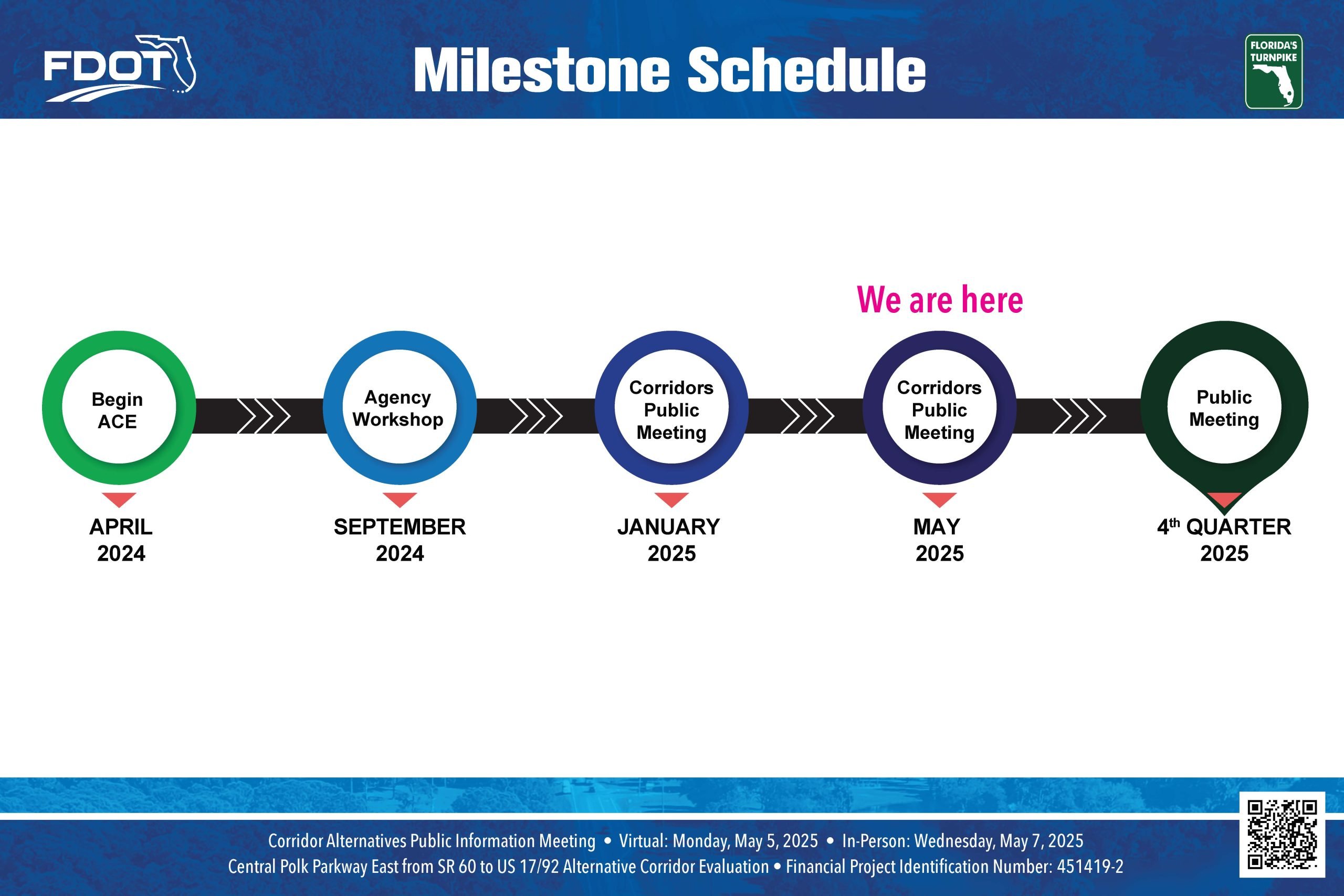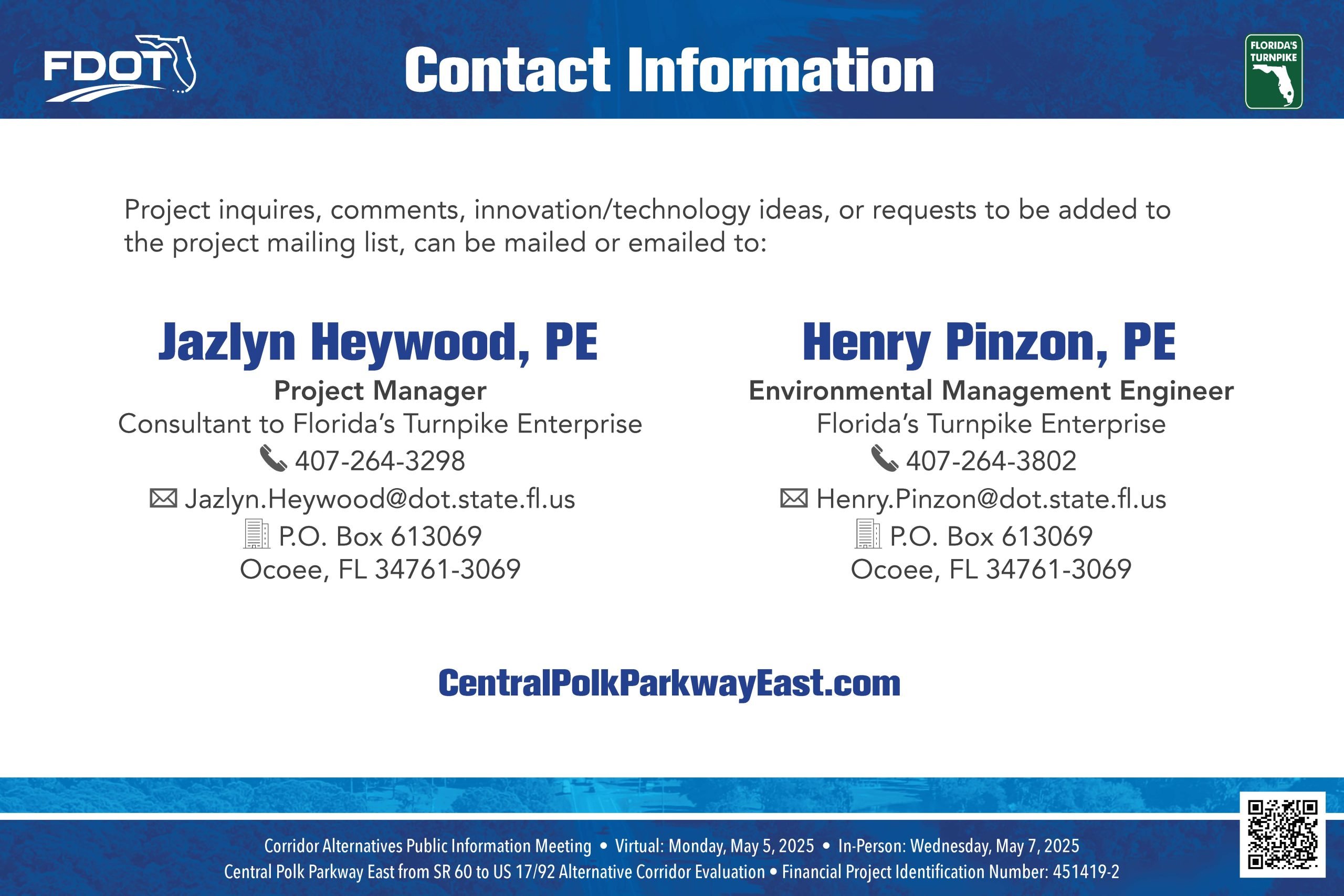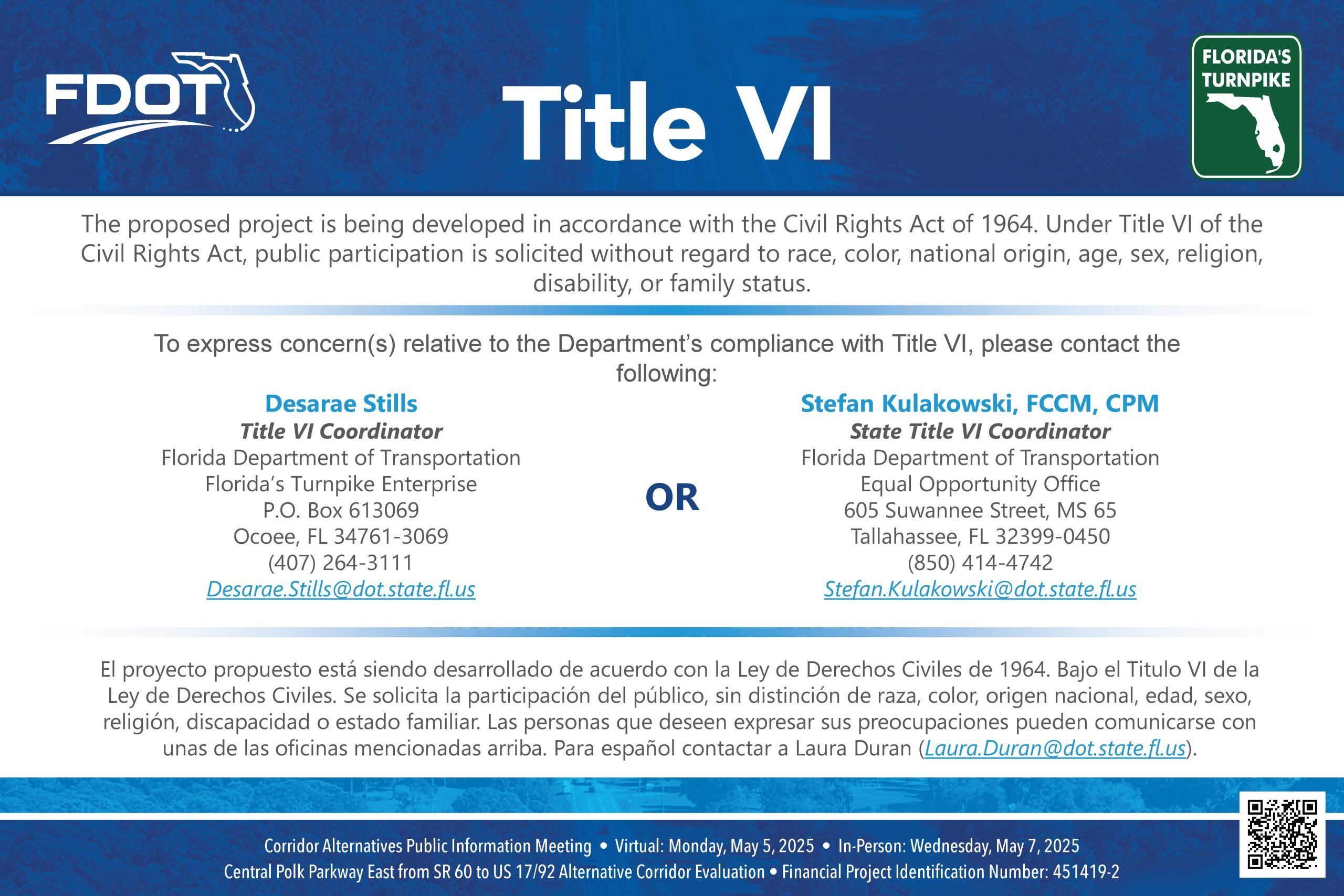A virtual public meeting was held for this project on Monday, May 5, 2025 at 6 p.m. An in-person public meeting will be held on Wednesday, May 7, 2025 between 4:30 p.m. and 7:30 p.m. at the Tom Fellows Community Center located at 207 North Boulevard West in Davenport, FL.
- Public Meeting Video
- Project Development Process
- Project Purpose and Need
- Corridors E and F
- Corridors E and F – City Limits
- Corridors E and F – Sociocultural Features
- Corridors E and F – Environmental Features
- Evaluation Matrix
- Address Locator QR Code
- Typical Section
- Existing Traffic Conditions
- The No Build Forecasted Traffic Conditions in year 2050
- Milestone Schedule
- Contact Information
- Title VI Compliance
The planning phase is the first phase of FDOT’s Project Development Process. An Alternative Corridor Evaluation, or ACE, is a planning-level study. Key components of an ACE include establishing the project’s purpose and need, defining the environment and developing corridor alternatives. The engineering and environmental features of each corridor are evaluated, fatal flaws identified, and community feedback solicited. If a feasible corridor is found, it then moves to the PD&E Study phase for further evaluation.
The purpose and need for a project provides the basis for developing, considering, evaluating, and eliminating project alternatives. The need for the Central Polk Parkway East includes accommodating population growth and the associated travel demands, improving regional connectivity and overall system linkage, enhancing freight mobility and economic competitiveness, and enhancing safety, emergency evacuation and response.
Corridor alternatives E and F were compared against each other to help determine which corridor best meets the project purpose and need, while avoiding and minimizing impacts to existing features. The evaluation matrix shown on this display board summarizes the results of a preliminary comparison of the corridor alternatives.

